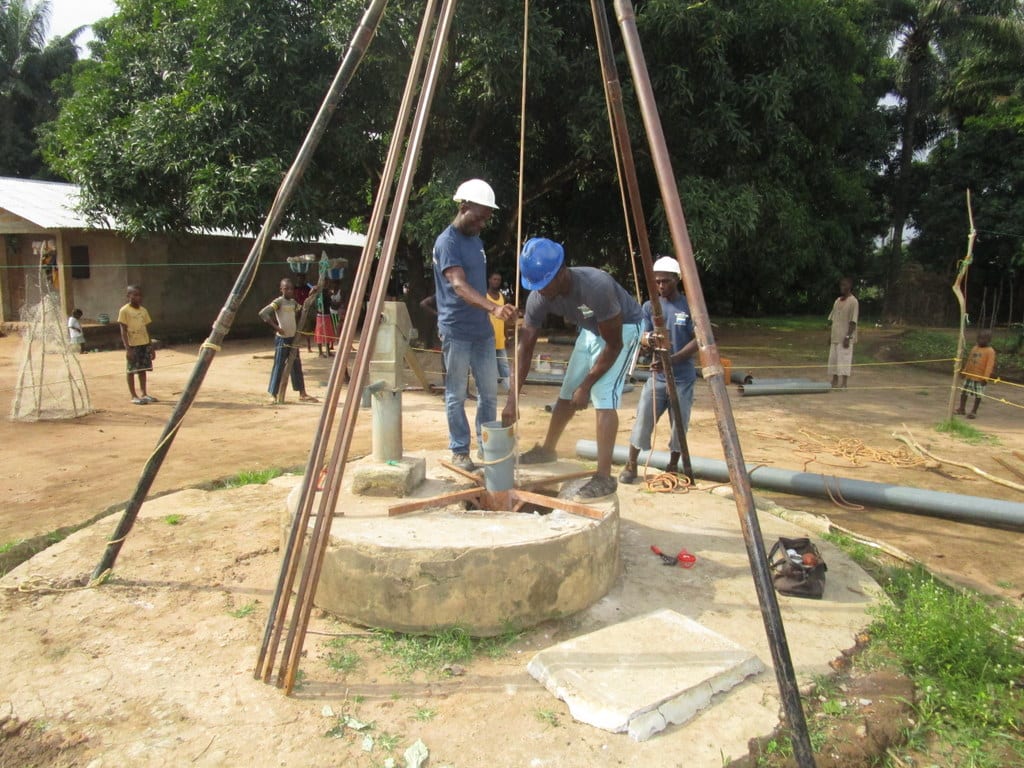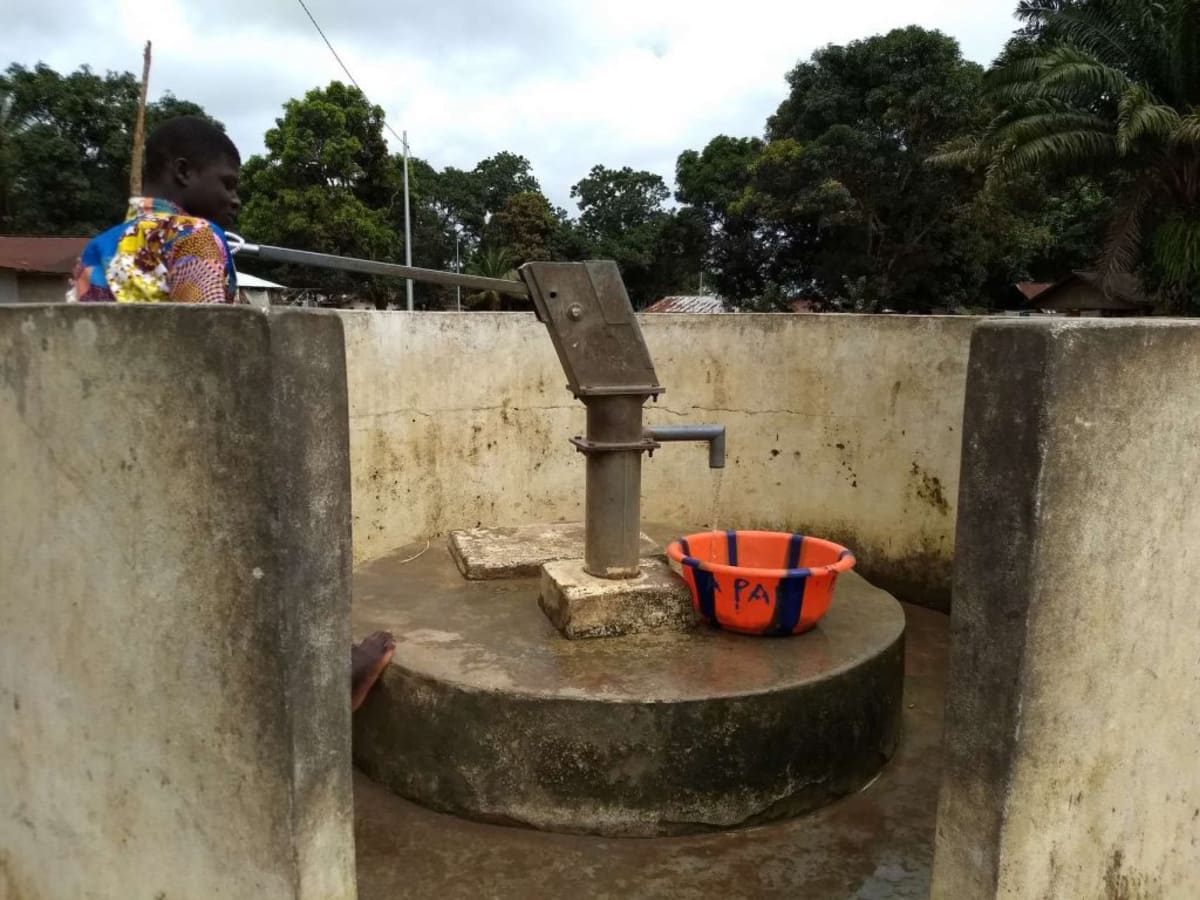This project is a part of our shared program with Mariatu’s Hope of Sierra Leone. Our team is pleased to directly share the below report (edited for clarity, as needed).
Welcome to the Community
The ancestors of Conakry Dee Community are Guineans; they came from Guinea-Kaporo, so they used their own language to name this town Conakry Dee, meaning "small." There were only two men and a woman from Guinea at its start! Their names where Pa. Saio Kuyea, Mangayea and Ya-Mariama. These people used a boat as a means of transportation from Conakry Dee to Freetown and other places.
The first chief of Conakry Dee was Pa. Adikaie Sumah, when there were 40 households built from mud and palm leaves. There were fishermen from Ghana and Nigeria who visited this village to join forces with the Conakridians to fish.
The early settlers of this town came from Guinea to fish, but they first settled in Rokuprr (Manbolo Chiefdom). They were given a contract to move and build a fishing village for the chief of Magberah Chiefdom.
Daily activities here revolve around fishing. In the early morning hours, people take their nets and go to the wharf. When the boats arrive, everyone runs to buy fresh fish from the fishermen in order to resell in different communities and markets. When it is time for prayers, they stop fishing, pray, and then continue with their livelihoods.
The majority of people here are Muslim who fish, trade, work in the local hospital or teach. The people follow European football and enjoy any opportunities to watch the matches at local canteens.
Water Situation
There is a hand-dug well that we have been monitoring on a quarterly basis. As the years passed, we got more and more phone calls from the community. These calls were during the dry season, and a visit from our mechanic confirmed that this well is being negatively impacted by the lack of rain.
As the water levels drop, the community must pump harder and longer to get what they need. At certain times, they can't get any water at all.
Before this hand-dug well was installed in 2000, the community was getting their water from an open stream. Back then, there was a small boy by the name of Kamanda; one of the many who went to the stream to fetch water. After he filled his container he decided to take a moment to swim. As he swam to the other side of the river, he was washed to the deepest part of the river and drowned. The other kids who were also at the river ran to call for help, but they were too late. He was nowhere to be found until after three days later when his body was seen floating at the other side. This incident was very difficult for the community, so they approached a local church asking for help in building a well to save their children.
These people were so happy they didn't have to send their children to fetch water from the stream anymore. But as the water levels in their well get worse, they have no choice but to return to dangerous, dirty water sources like the stream. They dry seasons are now so severe that the well is reported to dry up for almost five months!
Sanitation Situation
Less than half of households have their own pit latrine. Those we observed are built from mud and palm leaves. Many have no door, while others have tarps or empty rice bags hanging in the opening. Because of these poor conditions, open defecation is an issue here. With no other choice, community members seek the privacy of bushes to relieve themselves. This impacts the entire community; wild animals and rain can spread this waste from one side of the village to the other.
There are no hand-washing stations here, proving that little time or effort is spent for hygiene and sanitation. Trash is disposed of at the wharf, with most of it being thrown directly into the sea.
Plans: Hygiene and Sanitation Training
There will be hygiene and sanitation training sessions offered for three days in a row.
No hand-washing stations were observed here. After our visit, the hygiene and sanitation trainer decided it would be best to teach community members how to build a tippy tap (a hand-washing station built with a jerrycan, string, and sticks). They will use these tippy taps for hand-washing demonstrations, and will also teach about other tools like dish racks and the importance of properly penning in animals.
These trainings will also strengthen the water user committee that manages and maintains this well. They enforce proper behavior and report to us whenever they need our help solving a serious problem, like a pump breakdown.
Plans: Well Rehabilitation
The well marked for this overhaul is dry for half of every year and needs major work to supply adequate, clean water to the community year round. The pump will be removed, and a man will be lowered inside with a hand auger. This hand auger will allow the team to drill several meters deeper to hit a sufficient water column that will ensure the well supplies water throughout the drier seasons. As the team drills, casing will be installed, transforming this hand-dug well into a pseudo-borehole. PVC piping will connect this lower system directly to the pump, a construction that we know will also improve the quality of water.
Once this plan is implemented, everyone within the community will have access to safe drinking water in both quality and quantity, even through the dry months.

 Protected Dug Well
Protected Dug Well

































